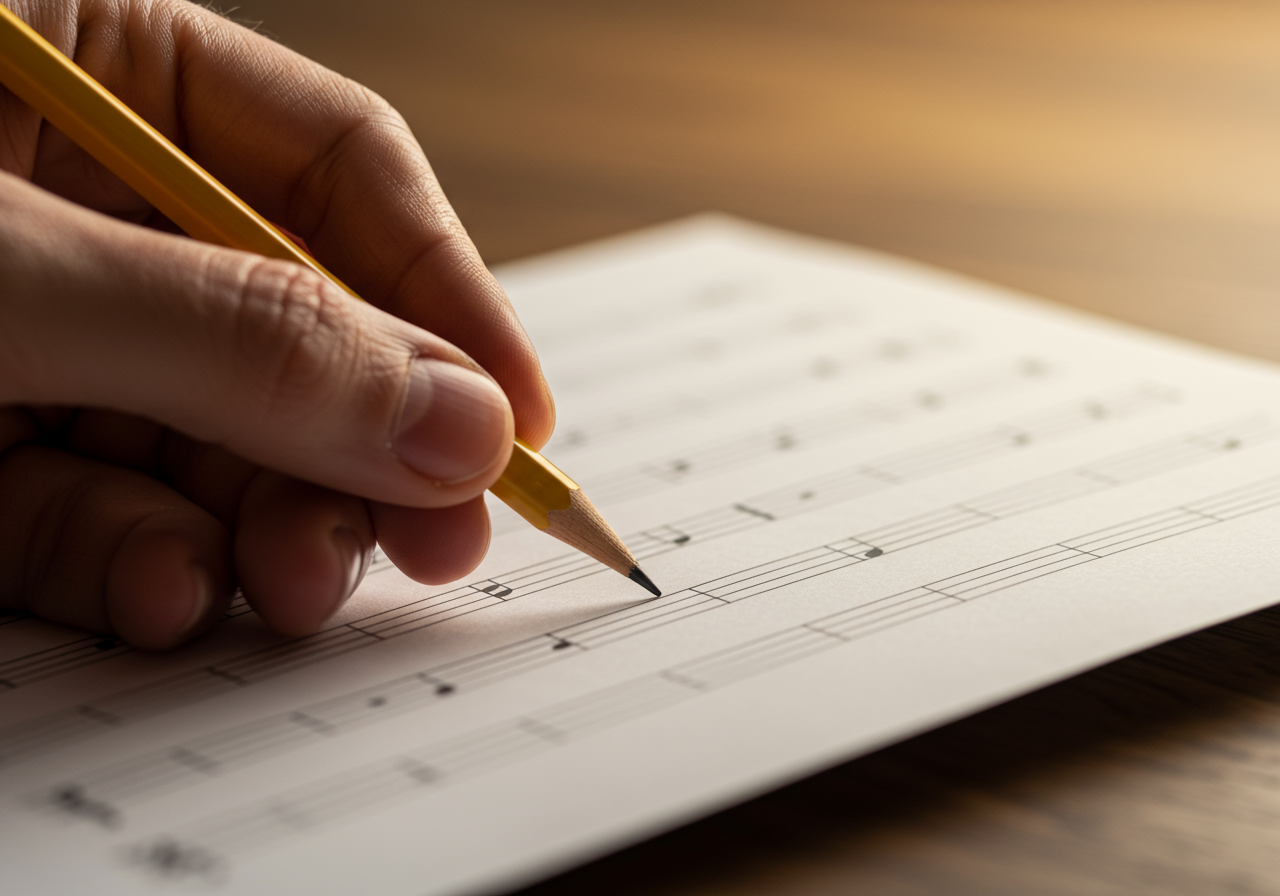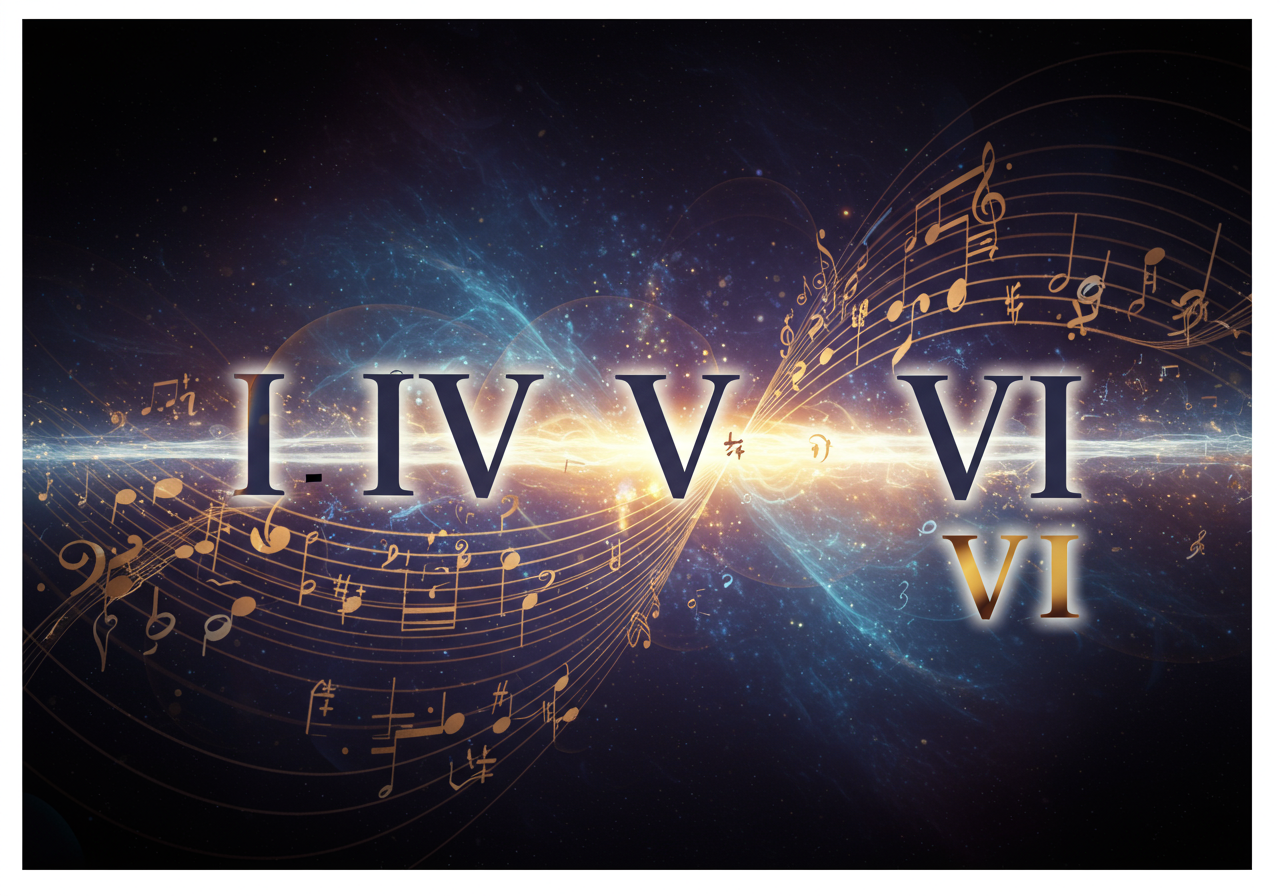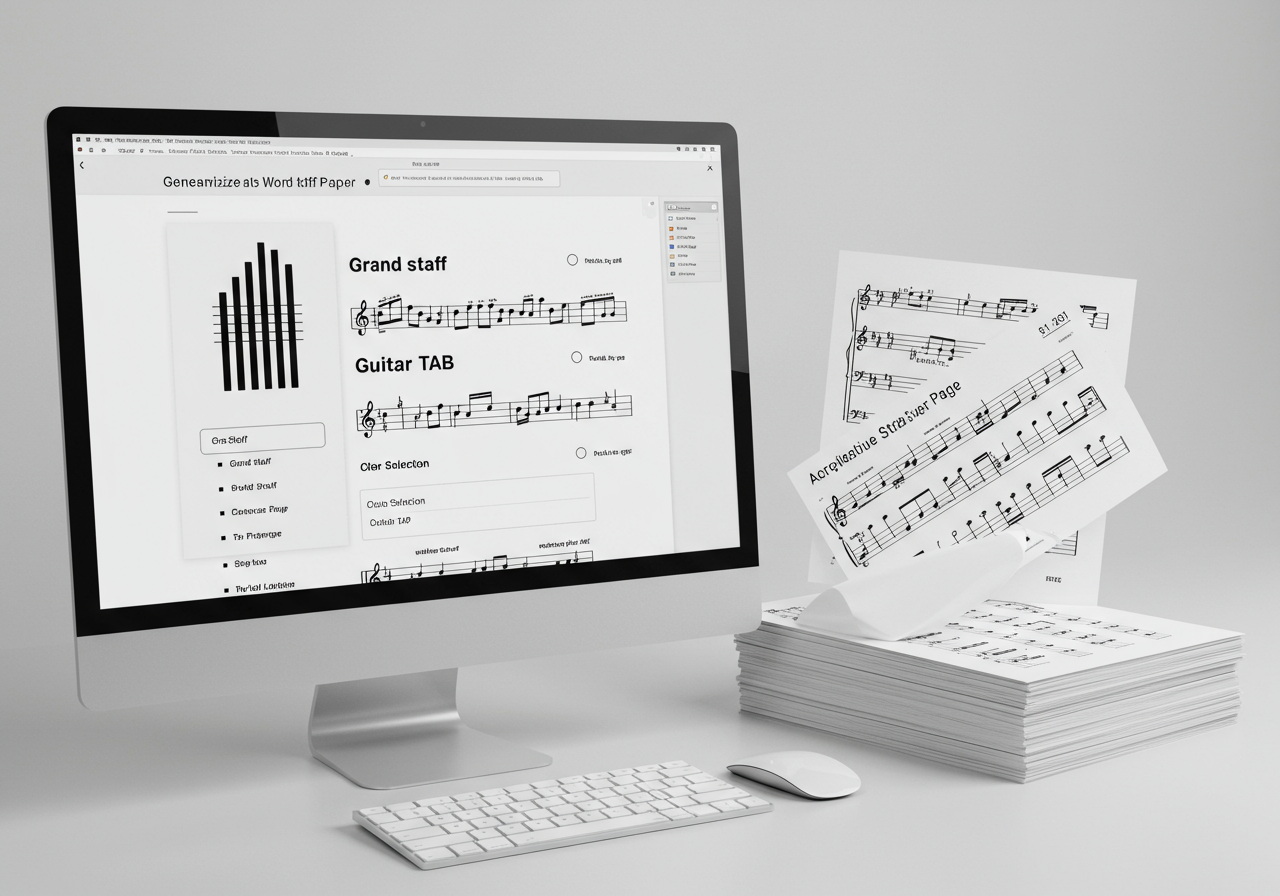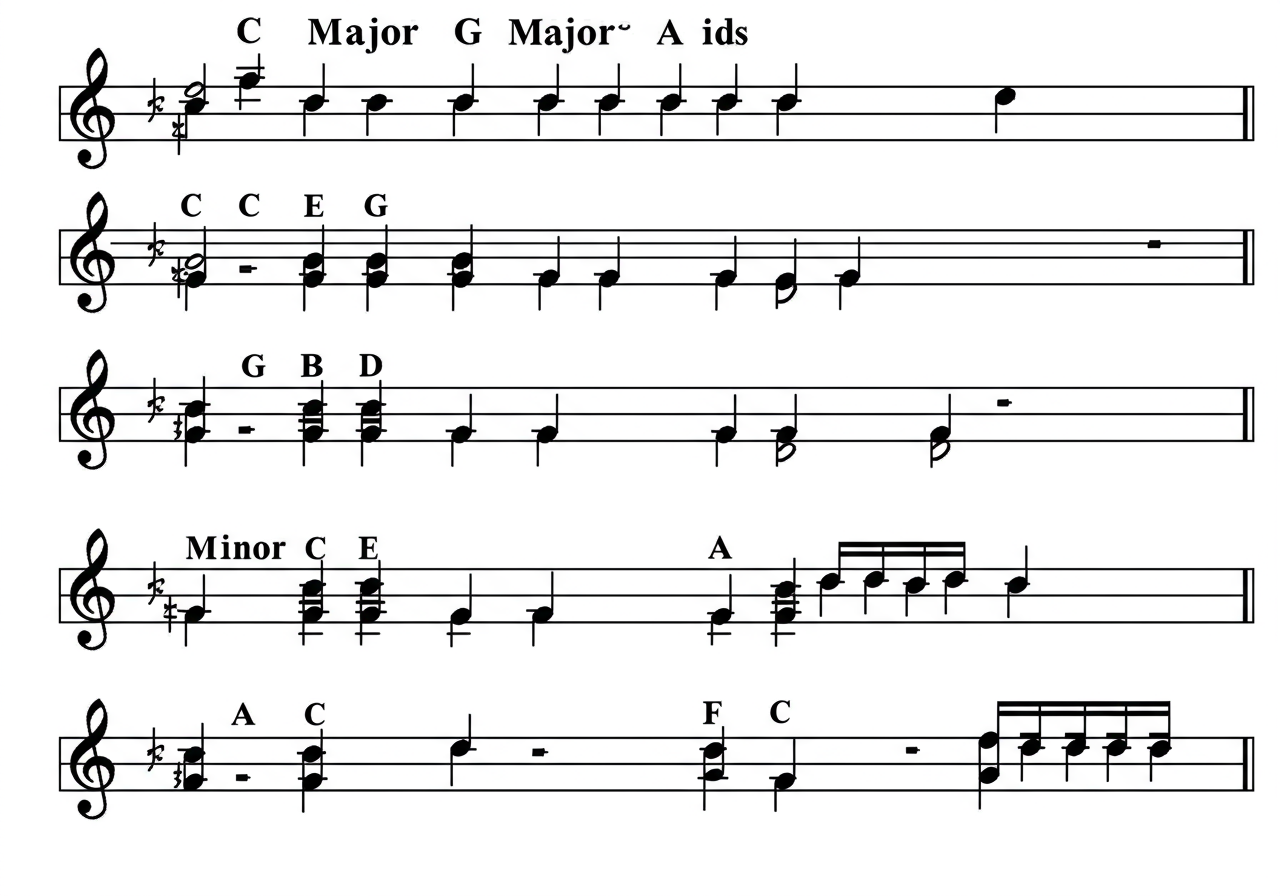Write Your First Chord Progression on Staff Paper: A Blank Sheet Music Guide
Capturing new musical ideas often starts with a solid chord progression. Many aspiring composers find this step intimidating, but it's more accessible than you think. You don't need expensive software or complex tools—just a clear idea and the right kind of staff paper. This guide will show you how to turn a blank page into your first musical creation.
Ready to write your first chord progression? This guide will break down the basics of harmony step-by-step, making songwriting feel less intimidating and more like fun. With the help of free, customizable manuscript paper, you’ll be ready to translate your musical ideas into concrete compositions today.

Understanding Basic Music Theory for Chords
Before putting pen to paper, a little music theory goes a long way. Think of it not as a set of rigid rules, but as a language that helps you express your musical ideas clearly. Understanding chords and how they relate to each other is the first step to building the emotional landscape of your song, helping you craft progressions that sound happy, sad, tense, or resolved.
What is a Chord Progression?
A chord progression is a series of chords played in a specific order, creating a sense of movement and providing the harmonic foundation for a melody. Think of it this way: if a melody is the story, the chord progression is the setting and mood. These sequences use tension and release to create expectations for the listener, making music emotionally compelling. Your choice of chords dictates this entire emotional arc.
Common Chord Progression Patterns to Start With
You don't have to reinvent the wheel to write a great song. Thousands of hits are built on a handful of time-tested chord progressions. Using these as a starting point is one of the best songwriting tips for beginners. Here are a few of the most common patterns, shown here using the Roman numeral system in the key of C Major (C=I, Dm=ii, Em=iii, F=IV, G=V, Am=vi):
- I - V - vi - IV (C - G - Am - F): The "pop-punk" or "axis of awesome" progression. It's incredibly versatile and found in countless hits from "Let It Be" to "Don't Stop Believin'."
- I - IV - V (C - F - G): The backbone of blues, rock, and folk music. It's simple, powerful, and instantly recognizable.
- vi - IV - I - V (Am - F - C - G): A slightly more melancholic and pensive progression, popular in modern pop and ballads.
Starting with these popular chord sequences allows you to focus on melody and lyrics without getting bogged down in complex harmony. Once you're comfortable, you can start experimenting and creating your own unique variations.

Getting Your Staff Paper Ready for Composition
With a basic understanding of chords, your next step is to get the right tool for the job. While digital software has its place, the tactile experience of writing music by hand on staff paper is invaluable for learning and creativity. It forces you to slow down, think deliberately about each note, and connect physically with your composition.
This hands-on approach is fantastic for internalizing music theory and developing your notational fluency. Plus, a stack of blank sheet music holds endless potential, free from the distractions of a computer screen. It's just you, your ideas, and the page.
Why Use Printable Staff Paper for Songwriting?
Why not just buy a notebook? Using printable staff paper offers unparalleled flexibility. Music notebooks are often a one-size-fits-all solution, but your needs as a composer will change from project to project. Maybe today you're sketching a piano piece and need a grand staff, but tomorrow you're writing a guitar riff and need a staff with a tablature (TAB) system.
The benefits of manuscript paper that you can print on demand are clear. It's cost-effective, as you only print what you need. It's also fully customizable, ensuring you always have the perfect layout for your instrument and style. You can get your free paper instantly, without a trip to the store.
Selecting Your Free Printable Staff Paper
This is where the power of a dedicated tool shines. Instead of being limited to a generic five-line staff, you can create the exact customizable music paper you need. This platform was designed to solve this exact problem for musicians, students, and teachers. The process is simple and intuitive.
First, think about your instrument. Are you writing for piano? Select the "Grand Staff" option. For guitar or bass? Choose the staff that includes TAB lines. Next, decide on the clef (Treble, Bass, etc.) and how many staves you want per page. A sparser layout gives you more room for notes and annotations, while more staves let you see a larger section of music at once. Once you've made your selections, you can generate a high-quality staff paper PDF and download it instantly. You can explore our templates to find the perfect fit.

Step-by-Step: Writing Your First Chord Progression
You have the theory, and you have your perfectly customized blank sheet music. Now it’s time for the most exciting part: writing. Don't worry about perfection. The goal here is to get your ideas down and build a foundation you can refine later. This process is about exploration and discovery.
Let’s use the I - V - vi - IV progression in C Major (C - G - Am - F) as our example. It’s a classic for a reason and a great way to start. Grab your pencil and your freshly printed staff notation paper.
Notating Chords on Staff Paper: A Visual Guide
This music notation guide will help you place your chords correctly. We'll write them as simple block chords, where all the notes are stacked vertically and played at the same time.
- Set Up Your Staff: At the beginning of your first staff, draw your clef (let's use a treble clef for this example) and a time signature (let's use 4/4).
- Write the First Chord (C Major): A C Major chord consists of the notes C, E, and G. On the treble clef staff, place a whole note on the C below the staff (on a ledger line), a whole note on the E in the bottom space, and a whole note on the G on the second line from the bottom. Stack them directly on top of each other.
- Write the Second Chord (G Major): A G Major chord is G, B, and D. In the next measure, stack whole notes on the G (second line), B (middle line), and D (fourth line).
- Write the Third Chord (A Minor): An A minor chord is A, C, and E. In the third measure, stack whole notes on the A (second space), C (third space), and E (top line).
- Write the Fourth Chord (F Major): An F Major chord is F, A, and C. In the final measure, stack whole notes on the F (bottom space), A (second space), and C (third space).
Congratulations! You've just notated your first chord progression. It may look simple, but this four-measure phrase is the harmonic engine for countless songs.

Adding a Simple Melody & Rhythm to Your Progressions
Once your chords are on the page, the fun of composing melodies can begin. Listen to the progression by playing it on a piano or guitar. What kind of melody do you hear? A great way to start is by using only the notes from the chords themselves (this is called using "chord tones").
For example, over the C Major chord, you could create a simple rhythm using the notes C, E, and G. Over the G Major chord, use G, B, and D. This ensures your melody will always sound harmonious. Experiment with different rhythms—long notes, short notes, and rests. This is how you breathe life into your chord progression and begin to shape it into a unique song.
Your Next Steps in Music Composition
You've just taken a huge step in your songwriting! Now that you understand basic theory and how to notate a chord progression, that blank page isn't intimidating anymore—it's your canvas. Keep practicing: try another progression, experiment with a new key, or add a melody. Our free, professional-quality manuscript paper is always here for you. Your next great song is just a chord progression away. Ready to write? Download your free staff paper now!
Frequently Asked Questions About Staff Paper & Chord Progressions
Where can I get free staff paper?
You can get high-quality, fully customizable, and free staff paper directly from our platform. It allows you to choose your instrument type, clef, staves per page, and paper size (A4/Letter), then instantly download a printable PDF without any cost or registration. It's the perfect resource for students, teachers, and composers.
What is staff paper called?
Staff paper is also commonly known as manuscript paper. You might also hear it referred to as blank sheet music, staff notation paper, or simply music paper. All these terms refer to paper printed with a series of five-line staves used for writing musical notation.
How many lines are on staff paper?
A single staff on standard staff paper has five horizontal lines and four spaces. Each line and space represents a different musical pitch, which is determined by the clef at the beginning of the staff. Specialized paper, like a piano grand staff, will feature two staves connected together, and guitar tablature paper will often have a six-line TAB staff below the standard five-line staff.
What is the best paper for sheet music?
The best paper for sheet music is one that suits your specific needs. The major advantage of our customizer tool is that you can create the perfect sheet for any project. For sketching ideas, a standard 12-stave layout on Letter or A4 paper is great. For a final orchestral score, you might want fewer staves per page for clarity. The best paper is the one you can customize for your manuscript to make your work clear and easy to read.